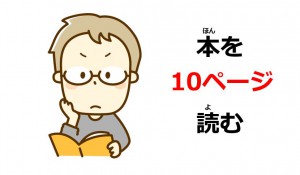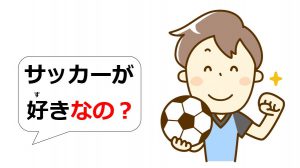In this section, you will learn how to make interrogative sentences. Before moving to the main topic, we would like to tackle the explanatory のだ (んだ)because understanding its functions is significantly important when making and responding to a question.
Explanation for How the Explanatory のだ (んだ) Works
The explanatory のだ (んだ) is one of the most frequently used words in Japanese. However, since there is no equivalent word in English and this word has a certain number of functions, some learners have difficulty understanding it. In this lesson, we will feature the major five functions.
Basic Idea
First of all, let us start with the difference between のだ and んだ. They have the same meanings, but the formality is different. のだ is formal and preferred in writing while んだ is a casual and preferred in speaking. Here, we will make examples with んだ. Please regard them as sentences in conversation.
Next, let’s check the conjugation rules. The explanatory のだ (んだ) is used at the end of sentences. Pay close attention to the conjugation when you use nouns and na-adjectives with のだ (んだ) in affirmative sentences. Apart from that, you can directly connect it to other parts of speech (i-adjectives, verbs, etc.).
Nouns and Na-adjectives in Affirmative Sentences: to Attach な + んだ
| 先生(なんだ / なんです) |
| 好き(なんだ / なんです) |
Others: to Attach んだ
| 学生(じゃないんだ / じゃないんです) |
| 嫌い(じゃないんだ / じゃないんです) |
| かわいい(んだ / んです) |
| 美味しくない(んだ / んです) |
| 走る(んだ / んです) |
| 泳がない(んだ / んです) |
Note: the negative-polite form: ません is not used with explanatory のだ (んだ). Even though we explained the negative form: ないです is a colloquial expression, you can be formal enough by using のだ. Now, let’s move to the functions.
Five Functions of the Explanatory のだ (んだ)
1. Reason
| 車は(買わない / 買いません)。 | 高い(んだ / んです)。 |
| Conclusion | Reason |
| As for cars, [I will] not buy [it]. | [It] is expensive. |
The first function is to express reasons. It’s not necessarily that there are two sentences like the above. For example, when you go out with a big luggage and bump into your mother, you say “旅行なんだ.” The plain meaning is “It’s travel,” but you have also expressed the reason why you have a big luggage by using んだ. Here are more examples.
| 学校は(行かない / 行きません)。 | 風邪(なんだ / なんです)。 |
| Conclusion | Reason |
| As for school, [I] won’t go. | [I] have a cold. |
| 日本は寿司が有名(だ / です)よ。 | 美味しい(んだ / んです)。 |
| Conclusion | Reason |
| As for Japan, sushi is famous. | [It] is delicious. |
| 今日は(寝ない / 寝ません)。 | 勉強する(んだ / んです)。 |
| Conclusion | Reason |
| As for today, [I will] not sleep. | [I] will study. |
2. Interpretation
| 辛い(んだ / んです)ね。 |
| (Interpretation) [It] is spicy, right? *Said when you saw a person with a red face after he/she ate curry. |
The second function is to express your interpretation. With the example above, the speaker interprets the curry as being spicy based off of the person’s flushed appearance. Interpretations don’t have to be correct. Take a look at some more examples.
| 田中さんはレディーガガが好き(なんだ / なんです)ね。 |
| (Interpretation) Tanaka-san likes Lady Gaga, right? *Said when you saw Tanaka-san was lively singing her songs. |
| ビートルズも歌うんだ。 |
| (Interpretation) [Tanaka-san] sings Beatles’ [songs], too. *Talked to yourself when you saw Tanaka-san read the lyrics of Beatles. |
3. Discovery (Non-Physical Objects)
| 私の携帯(電話)がiPhoneなんだ。 |
| (Discovery) My mobile is iPhone. *Said to yourself when you wanted to know what iPhone was like and realized your mobile was actually the one. |
The third function it to express discovery. The point here is that you cannot use this for physical objects. In the above example, you have discovered the form, the function, or the quality of iPhone, not the material itself. In another example, when you open a window and notice that it’s raining outside, you just say “雨だ” because you have found rain itself. However, if you realize that the rain is actually snow and it’s the first time for you to see snow, you can say “これが雪なんだ (This is the snow).” Namely, you have discovered what snow is like.
| お酒は健康にいいんだ。 |
| (Discovery) Alcohol is good for health. *Said to yourself when you had no idea about alcohol, but came to know that’s actually good for health. |
| ペンギンは空を飛ばないんだ。 |
| (Discovery) Penguins don’t fly in the sky. *Said to yourself when you thought that penguins flied, but came to know they actually didn’t. |
4. Summary (Rewording)
| ダンは日本人じゃ(ない / ありません)。 | アメリカ人(なんだ / なんです)。 |
| Conclusion | Rewording |
| Dan is not Japanese. | [He] is American. |
The fourth function is to express summaries (rewording). You can roughly consider this as the equivalent to “in other words” in English.
| 仕事を (やめる / やめます)。 | 転職する(んだ / んです)。 |
| Conclusion | Rewording |
| [I will] quit my job. | [I will] change my job. |
| 寝る / 寝ます。 | 体調が悪い(んだ / んです)。 |
| Conclusion | Rewording |
| [I will] go to bed. | Lit. [My] condition is bad. |
5. Preliminary Remarks
| 寿司は人気(なんだ / なんです)。 | だから、少し高い(です)よ。 |
| Preliminary Remark | Conclusion |
| Sushi is popular. | So, [it] is a little expensive. |
The last function is to express preliminary remarks. Other functions you have learned so far modify prior sentences or situations. However, this function modifies following sentences. That’s the difference. By using this, you can call listeners’ attention to coming sentences. *You will learn Japanese conjunctions such as だから in other lessons.
| 北海道は寒い(んだ / んです)よ。 | 上着が(いる / いります)よ。 |
| Preliminary Remark | Conclusion |
| Hokkaido is cold. | [You] need a jacket. |
| 実は、もうすぐ結婚する(んだ / んです)。 | 結婚式は来月(だ / です)よ。 |
| Preliminary Remark | Conclusion |
| Actually, [I will] get married soon. | Lit. As for the wedding, [it] is next month. |
[adsense]
Feminine Expressions
As you learned in the sentence ending particle lesson, by omitting だ from んだ, you can also make feminine expressions. Note: when you omit だ from んだ, the remaining ん always becomes の. This is only applicable for casual tone. That is to say, the following sentence sounds casual.
| 実は、もうすぐ結婚するの。 |
Sentence ending particles can be used together with the omission like this;
| Feminine: 北海道は寒いのよ。 |
| Plain: 北海道は寒いんだよ。 |
Summary
- のだ can be pronounced as んだ in conversation.
- The conjugation needs only in affirmative sentences with nouns and na-adjectives.
- The functions are to express:
- Reason
- Interpretation
- Discovery (Non-Physical Objects)
- Summary (Rewording)
- Preliminary Remarks
We have covered the major and basic functions here. Although the explanatory のだ (んだ) is often used in everyday life, there are many usages. We will pick up the rest of them in other lessons. Then, this can actually be utilized for a question marker. Next, let’s learn how to make interrogative sentences with this.





